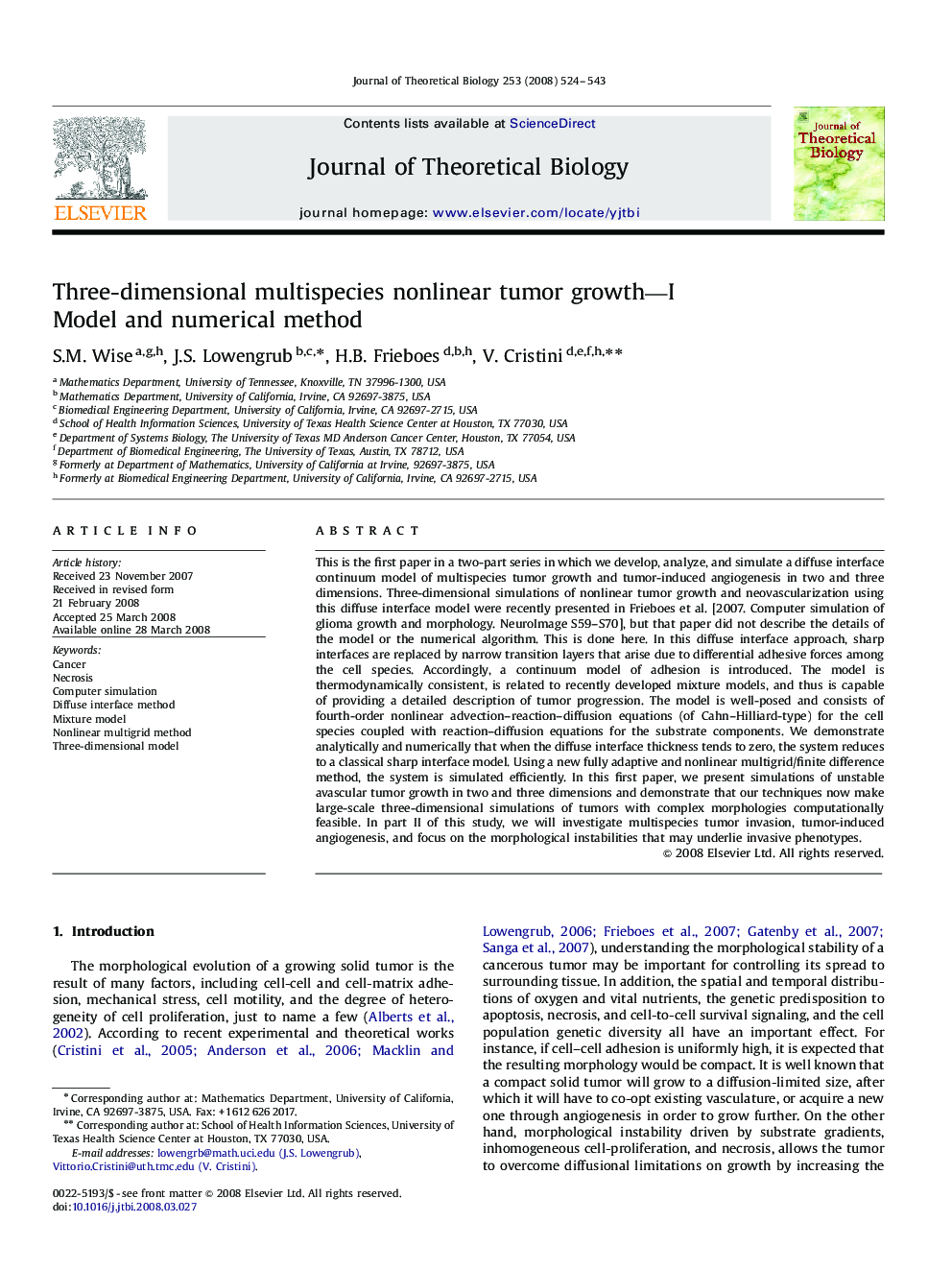| Article ID | Journal | Published Year | Pages | File Type |
|---|---|---|---|---|
| 4498278 | Journal of Theoretical Biology | 2008 | 20 Pages |
This is the first paper in a two-part series in which we develop, analyze, and simulate a diffuse interface continuum model of multispecies tumor growth and tumor-induced angiogenesis in two and three dimensions. Three-dimensional simulations of nonlinear tumor growth and neovascularization using this diffuse interface model were recently presented in Frieboes et al. [2007. Computer simulation of glioma growth and morphology. NeuroImage S59–S70], but that paper did not describe the details of the model or the numerical algorithm. This is done here. In this diffuse interface approach, sharp interfaces are replaced by narrow transition layers that arise due to differential adhesive forces among the cell species. Accordingly, a continuum model of adhesion is introduced. The model is thermodynamically consistent, is related to recently developed mixture models, and thus is capable of providing a detailed description of tumor progression. The model is well-posed and consists of fourth-order nonlinear advection–reaction–diffusion equations (of Cahn–Hilliard-type) for the cell species coupled with reaction–diffusion equations for the substrate components. We demonstrate analytically and numerically that when the diffuse interface thickness tends to zero, the system reduces to a classical sharp interface model. Using a new fully adaptive and nonlinear multigrid/finite difference method, the system is simulated efficiently. In this first paper, we present simulations of unstable avascular tumor growth in two and three dimensions and demonstrate that our techniques now make large-scale three-dimensional simulations of tumors with complex morphologies computationally feasible. In part II of this study, we will investigate multispecies tumor invasion, tumor-induced angiogenesis, and focus on the morphological instabilities that may underlie invasive phenotypes.
